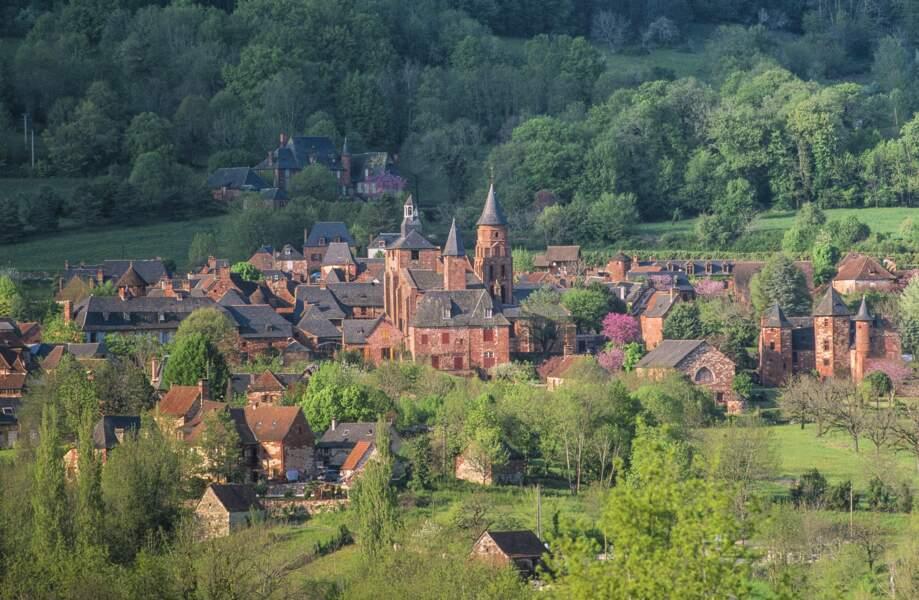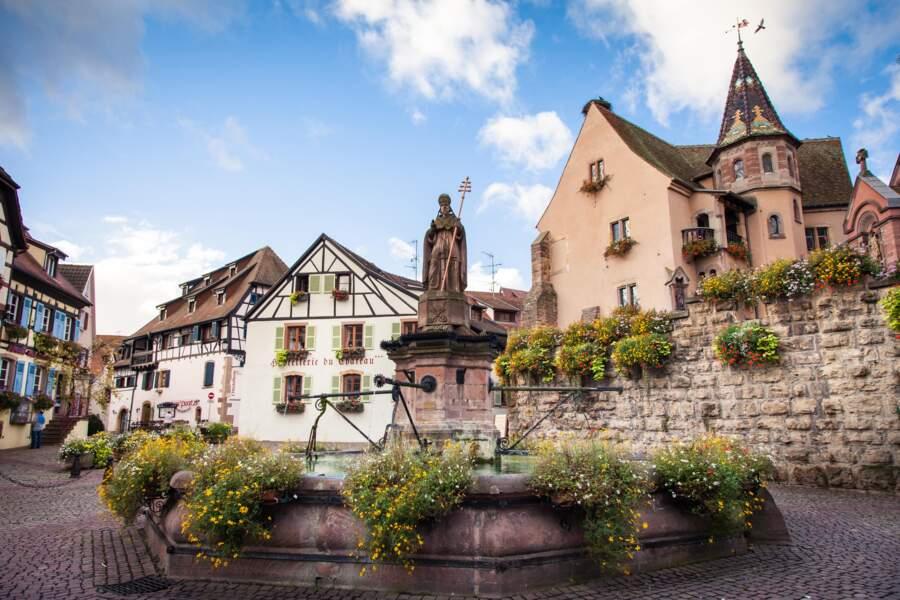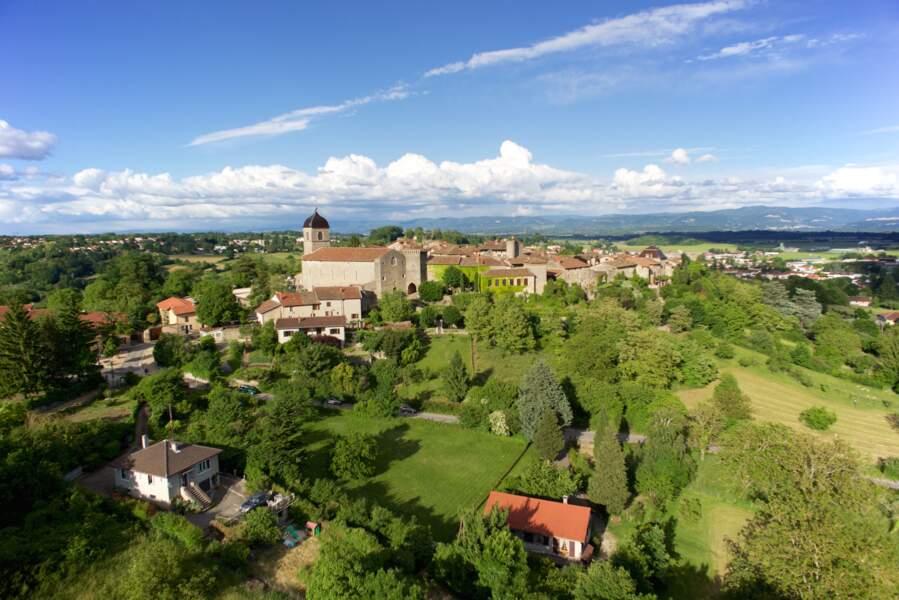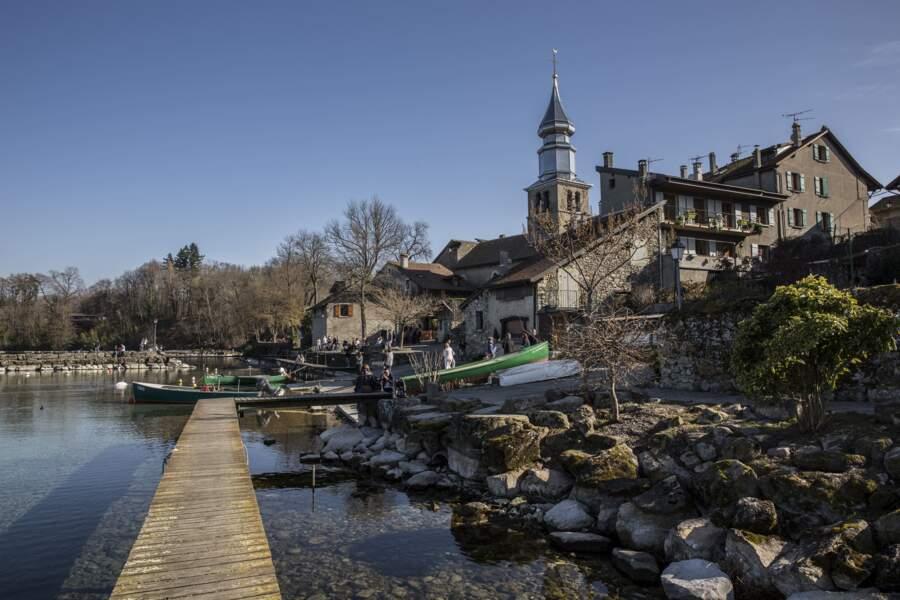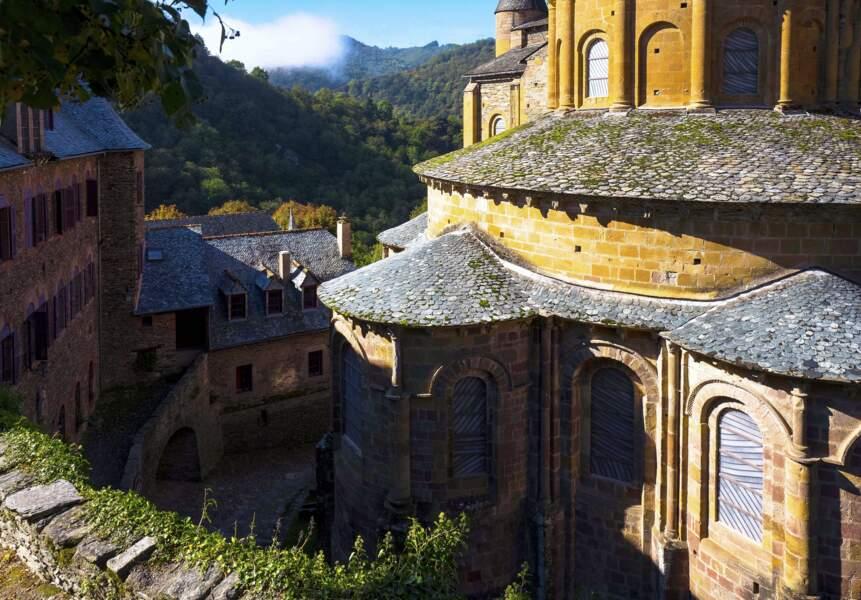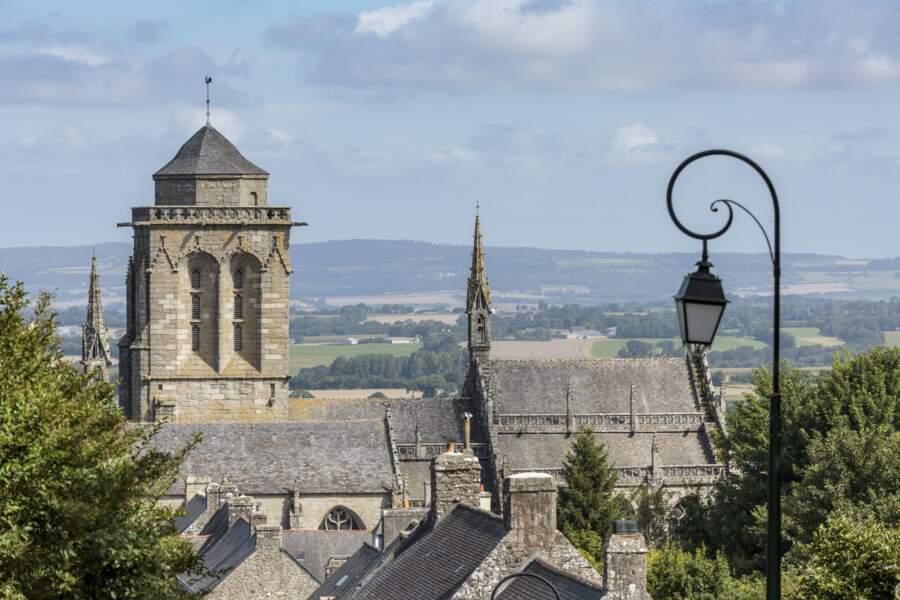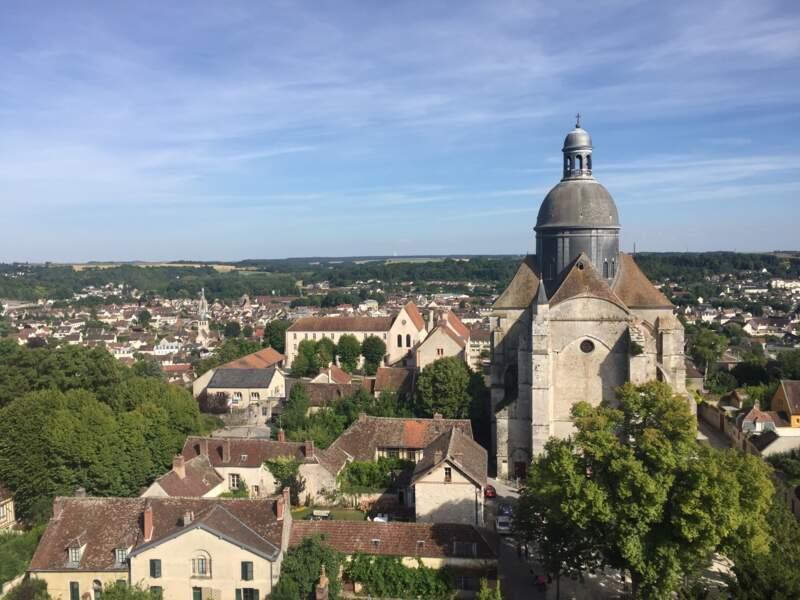Collonges-la-Rouge (Corrèze)
Built on the geological fault of Meyssac, Collonges-la-Rouge owes its name to its red sandstone which makes it so emblematic. Nestled only twenty kilometres from Brive-la-Gaillarde, the village will seduce you with its medieval streets, castles and fortified towers. Amongst the must-sees, the Mermaid House, the Romanesque church and its tympanum, the covered market hall and its banal oven, the Chapel of the Penitents Noirs and its contemporary art stained glass windows.
Eguisheim (Haut-Rhin)
Eguisheim is a magnificent and typical Alsatian village with half-timbered houses surrounded by ramparts. In the neighbouring hills covered with vineyards, the Three Castles seem to watch over the village. The Castle of the Counts, which stands on the central square, was built in the 8th century by Count Eberhardt, grandson of the third Duke of Alsace. At the beginning of the 13th century, Eguisheim was bequeathed to the bishopric of Strasbourg and became a fortified town, which was attached to the Haut-Mundat de Rouffach until the Revolution.
Pérouges (Ain)
In Pérouges, time seems to stand still. Indeed, innkeepers, paper-makers and calligraphers live side by side in this old weaver's town surrounded by a double wall. In June, you can even meet knights and princesses during the medieval festival. It is enough to forget that we are only half an hour's drive from Lyon.
Yvoire (Haute-Savoie)
Bordered by Lake Geneva, this old fishing hamlet with an incredible fortress has been awarded the label of the most beautiful villages in France. No less than 700 years of history can be seen from the top of its ramparts and its imposing 14th century castle. In the heart of the village, nicknamed the Pearl of the Lake, you can stroll through the Garden of the Five Senses, a green paradise classified as a remarkable garden by the Ministry of Culture.
Gordes (Vaucluse)
Perched at 400 m on the southern flank of the Vaucluse mountains on the edge of the Luberon Regional Nature Park, Gordes is famous for its calades. These steep cobbled streets, lined with high dry-stone buildings, form a veritable labyrinth where one likes to get lost. In the Middle Ages, the village was a refuge for people fleeing invasions and religious wars. It was at this time, in 1031, that the castle was built, which was extensively modified during the Renaissance.
Baux-de-Provence (Bouches-du-Rhône)
Overlooking the Alpilles valley, Baux-de-Provence sits atop a limestone plateau and offers a breathtaking panorama. Today, the village is home to a treasure trove of 22 architectural pieces classified as historical monuments. You will be able to contemplate the ruins of the "dead city", an ancient medieval castle adorned with a keep, the towers, or the Sainte-Blaise chapel, which stand alongside sumptuous restored houses.
Saint-Guilhem-le-Désert (Hérault)
North-west of Montpellier, at the foot of the Larzac plateau, this village, classified as a "Grand site de France", will amaze you with its picturesque charm. The Gellone Abbey, set in the heart of a wilderness on the edge of breathtaking cliffs, is listed as a UNESCO World Heritage Site as part of the Pilgrimage Route to Santiago de Compostela. The Devil's Bridge, another listed site, offers a breathtaking view of the Hérault gorges.
Conques (Aveyron)
Located in Aveyron, at the foot of the Dourdou river and on the road to Compostela, the village of Conques is a medieval jewel. You will be amazed by its cobbled streets, its Romanesque fountains and its half-timbered houses. Listed as a UNESCO World Heritage Site since 1998, its abbey church is one of the masterpieces of Romanesque art in southern France. The 11th and 12th century building boasts 250 capitals, contemporary stained glass windows by Pierre Soulages and a tympanum with 124 sculpted figures.
Rocamadour (Lot)
Clinging to the cliffside in the Alzou canyon, Rocamadour has been admired since the Middle Ages. Indeed, as early as the 12th century, pilgrims travelled from all over Europe to come and pray here. A venerated sanctuary of the Black Virgin, the village also attracts many visitors because of its Paleolithic cave, discovered in 1920, and its dwellings that seem to rise from the rock.
Limeuil (Dordogne)
A former commercial port located at the confluence of the Dordogne and Vézère rivers, Limeuil has experienced Viking invasions and the Hundred Years War. The old city wall has kept its three access doors as vestiges. As you wander through the village, you will be able to admire the stone houses, the brown tiled roofs typical of the Périgord Noir and discover the andronnes. These small alleys were used to collect waste water and acted as "firebreaks" to prevent the spread of fires.
Moncontour (Côtes d'Armor)
Perched on the top of a hill, at the confluence of the Evron and the Etang stream, Moncontour played an important military role from the 12th century. The imposing ramparts that surround it allow it to defend Lamballe, capital of Penthièvre. After suffering sieges and assaults, the town turned to the linen and hemp trade, which it exported to Spain and India. Its magnificent church (Saint-Mathurin), decorated with 16th century stained glass windows, is a must-see.
Locronan (Finistère)
Marvellously preserved, Locronan takes its name from Saint-Ronan, the hermit who founded the town in the 10th century. The Breton village reached its peak in the 16th century thanks to the sailcloth industry, which was very popular with the Compagnie des Indes. Today, the granite village boasts beautiful Renaissance houses and a beautiful 15th century church. Its exceptional setting has also been used as a backdrop for several films including Chouans! and Un long dimanche de fiançailles.
Dole (Jura)
Situated near Dijon and bordering the Doubs, Dole was the capital of Franche-Comté until 1678. Labelled a "City of Art and History" since 1992, the Jura town is also renowned for its gastronomy. Once there, go to the tourist office to obtain a map of the Chat Perché itinerary, a tour specially designed to discover this medieval village. You can visit Louis Pasteur's house, a listed monument, and stroll along the Tanneurs canal.
Vézelay (Yonne)
As soon as you arrive in "this boat that has cast anchor on the horizon", as Paul Claudel wrote, you can admire the chiselled ridge of the Sainte-Marie-Madeleine basilica. At the foot of the "eternal hill" and facing the Morvan mountains, the building seems to watch over the winegrowers' houses and the Renaissance residences. This masterpiece of Romanesque art, restored in the 19th century by Viollet-le-Duc, makes Vézelay a major pilgrimage site and a departure point for Compostela.
Provins (Seine-et-Marne)
If you live in the Paris region, there's no need to cross France to discover one of its most beautiful medieval sites. Provins, located halfway between Troyes and the capital, is full of treasures. Among them, its ramparts, its tithe barn, its emblematic Caesar tower and its majestic keep overlooking the surrounding countryside. Listed as a UNESCO World Heritage Site, the town also organises the largest medieval festival in France every year in June.
Related articles
30 (great) ideas for your next hikes in France

Overseas: the islands of France
What are the 20 sunniest cities in France?
Discover the 20 hottest cities in France

What to eat in France: typical dishes, tips and curiosities about French cuisine

Urbex: discovering abandoned places across France and Europe
Sleeping at the zoo in France: where, how and at what price?
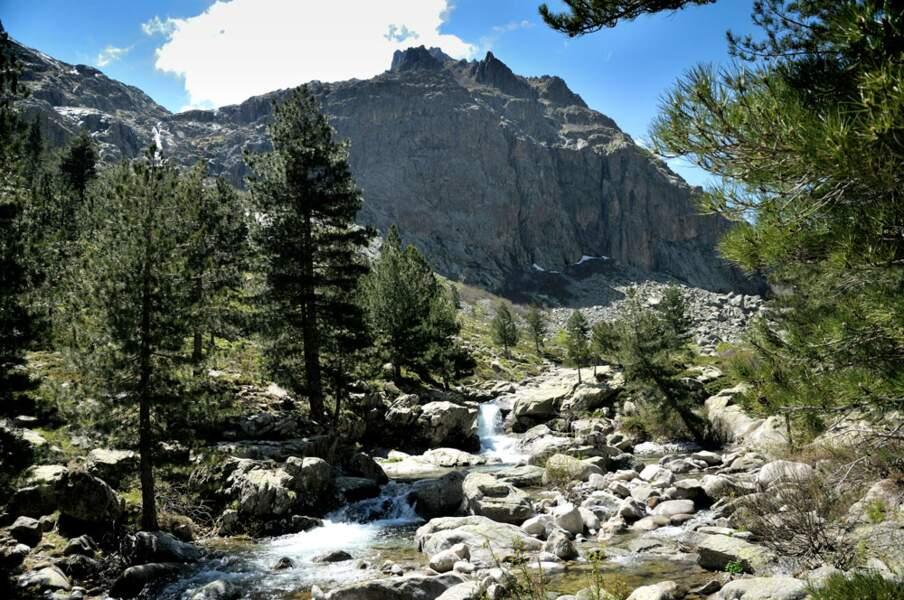
The top 10 most beautiful treks in France
